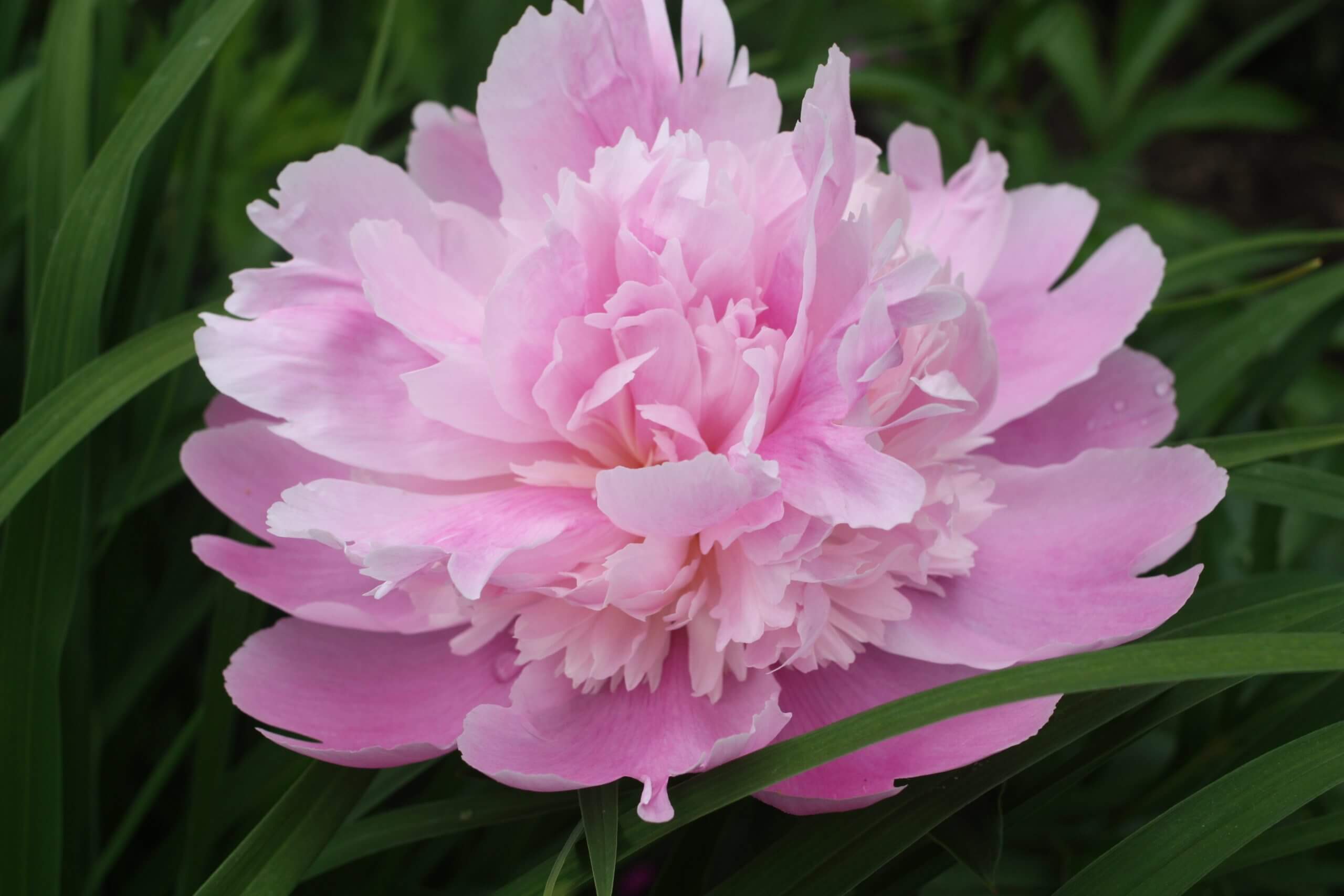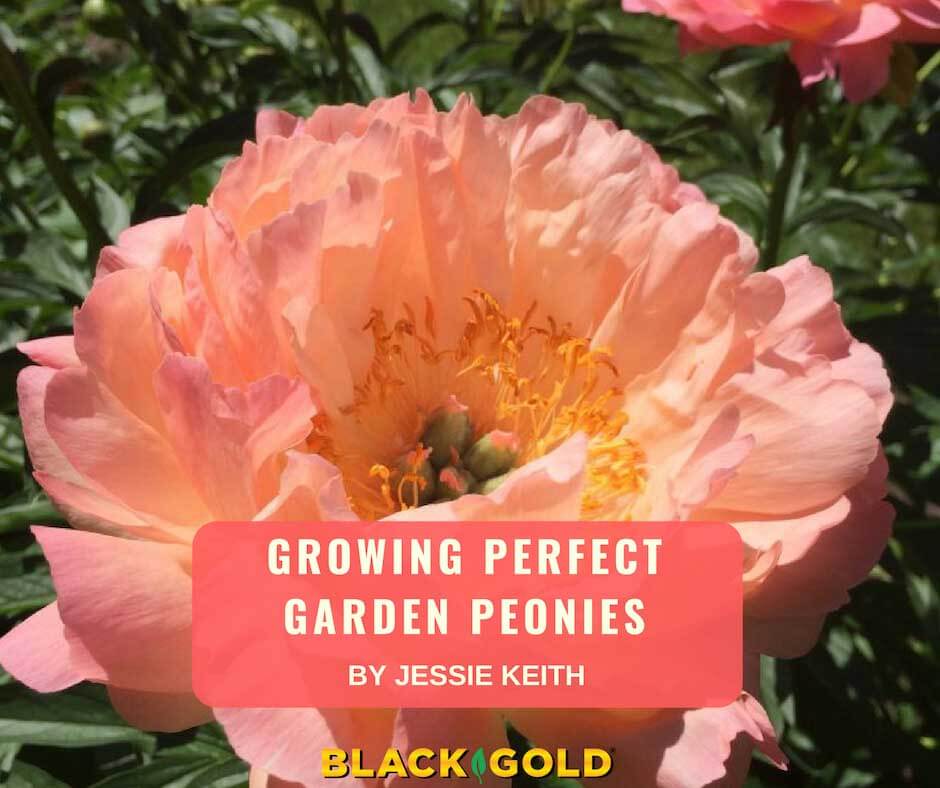
It’s time to plant peonies! Nothing says spring like a garden full of bright, beautiful peonies (Paeonia spp.). Their big, fragrant flowers are great for cutting and come in shades of red, pink, white and yellow and may be single, semi-double, or double. The plants themselves are resilient and can live as long as 100 years or more. This is why established clumps of these old-fashioned garden flowers often exist around old homes.
First cultivated in China, where an estimated 41% or the world’s species reside, peonies have been the object of adoration for nearly 4000 years. There are hundreds of variable woody and herbaceous varieties for the garden. All are long-lived and wonderfully beautiful in their own right.
Herbaceous Peonies
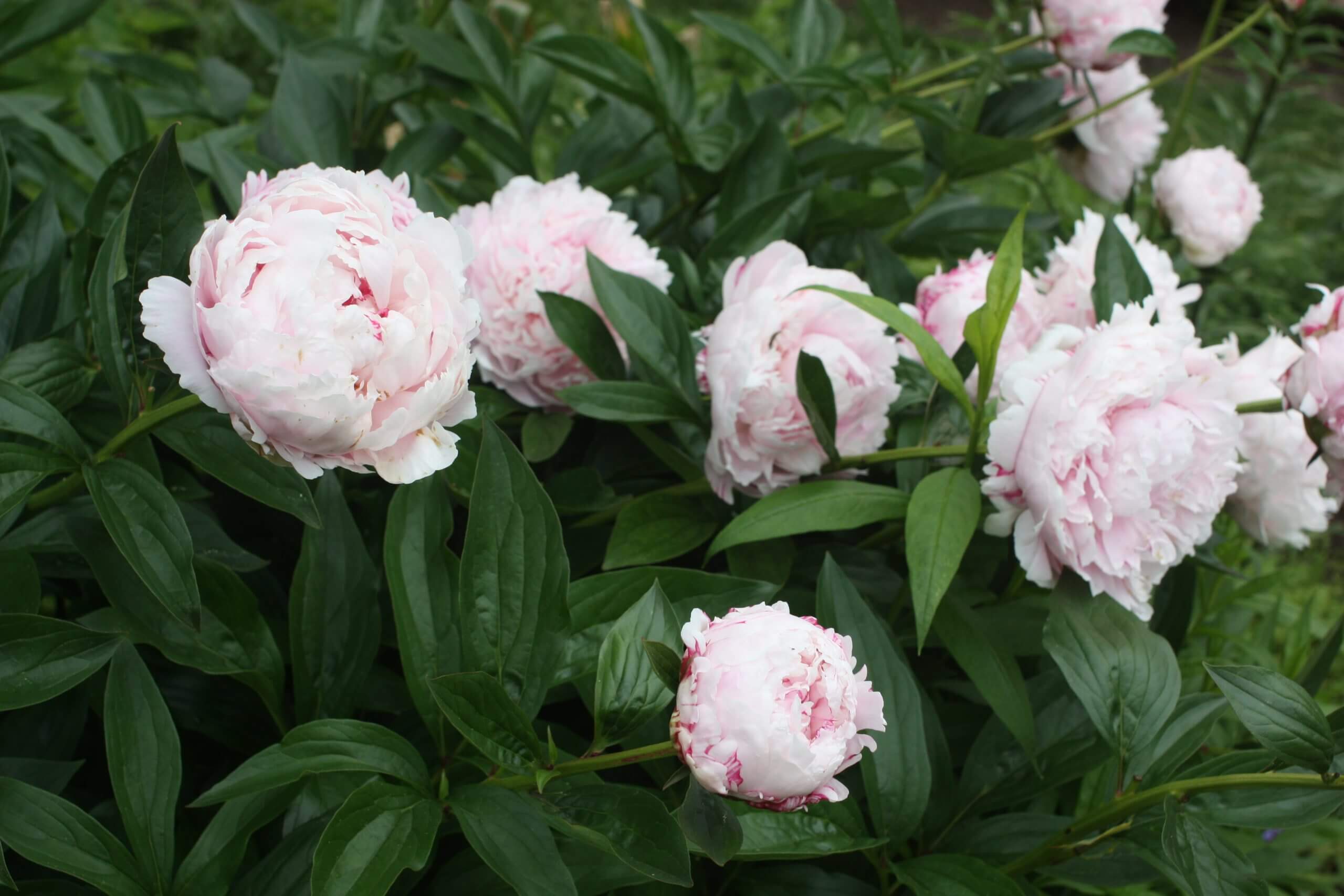
Common garden peonies (Paeonia lactiflora) are the classic herbaceous peonies found in American gardens. The large, bushy plants produce loads of big, late-spring flowers that are hardy to USDA Hardiness Zones 3-8. Caging or staking is recommended for double-flowered varieties because weak stems often cause the flowers to flop to the ground in heavy rains. Through summer, these perennials are not very attractive, so it’s best to plant other pretty garden flowers around them for continued seasonal interest. In winter, herbaceous peonies die all the way to the ground and old stems should be cut back.
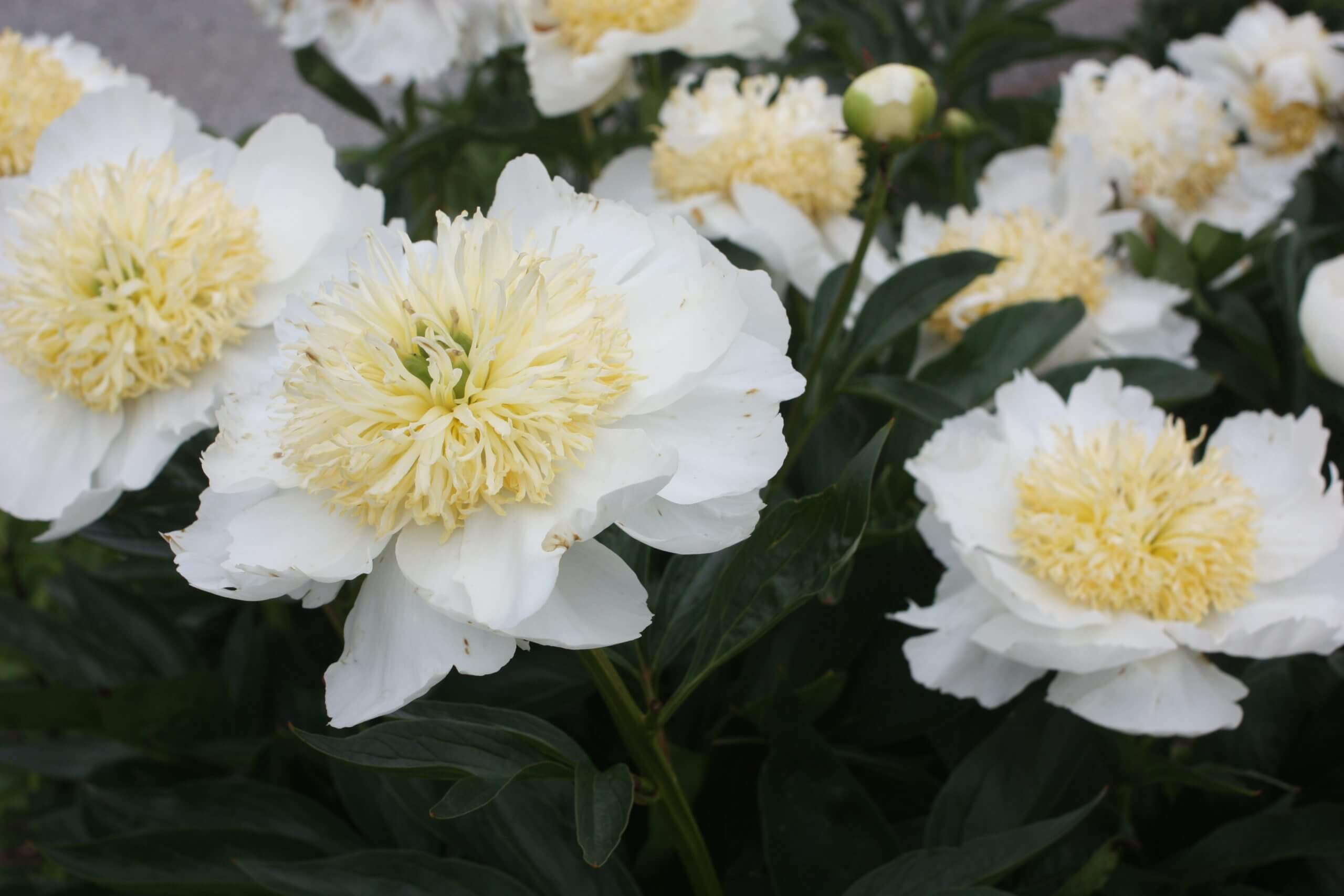
Herbaceous peonies have many flower forms other than standard single, semi-double, and double types. Bomb peony flowers have a big round puff or “bomb” of petals, and Japanese- and anemone-peony flowers have golden puffs of color at the center of the blooms.
Exceptional varieties include the single, clear-pink-flowered ‘Pink Dawn’, the classic pale double pink ‘Sarah Bernhardt’, the semi-double, peachy coral ‘Coral Charm’, and the white and pale yellow, Japanese-flowered ‘Gold Rush’.
Tree Peonies
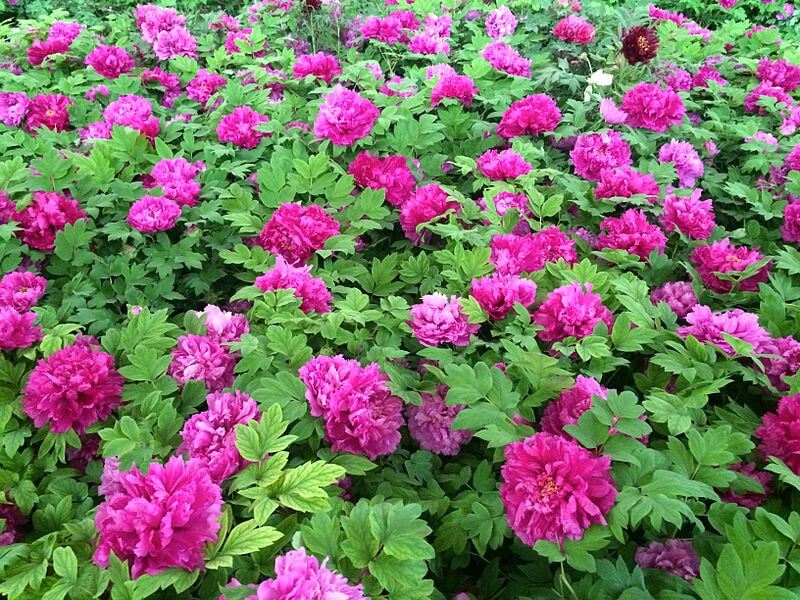
The spare, shrubby habits of tree peonies don’t impress, but the spectacular flowers they produce are some of the biggest and best around. Blooms can reach up to 10” across and come in shades of white, pink, and purplish red as well as burnished yellows and corals. Flowers burst forth from late spring to early summer for a period of around two weeks. Grow them in full sun to partial shade.
Plants are slower growing than herbaceous peonies, and their branches can be brittle, so it is important to protect them from the wind. Even though most are hardy to USDA Hardiness Zone 4, their buds can be damaged by frost—another reason to plant them in a protected spot.
Great varieties include the American Peony Society Gold Medal Winner ‘Age of Gold’, which has huge golden blooms—often with more than one flower per stem—and reaches 5 feet in height. The semi-double, pink-flowered ‘Hana Kisoi’ is another garden classic that blooms in May and originates from Japan. The brilliant white-flowered ‘Phoenix White’ bears enormous single flowers, grows relatively quickly and will add sparkle to partially shaded gardens.
Intersectional Hybrid Peonies
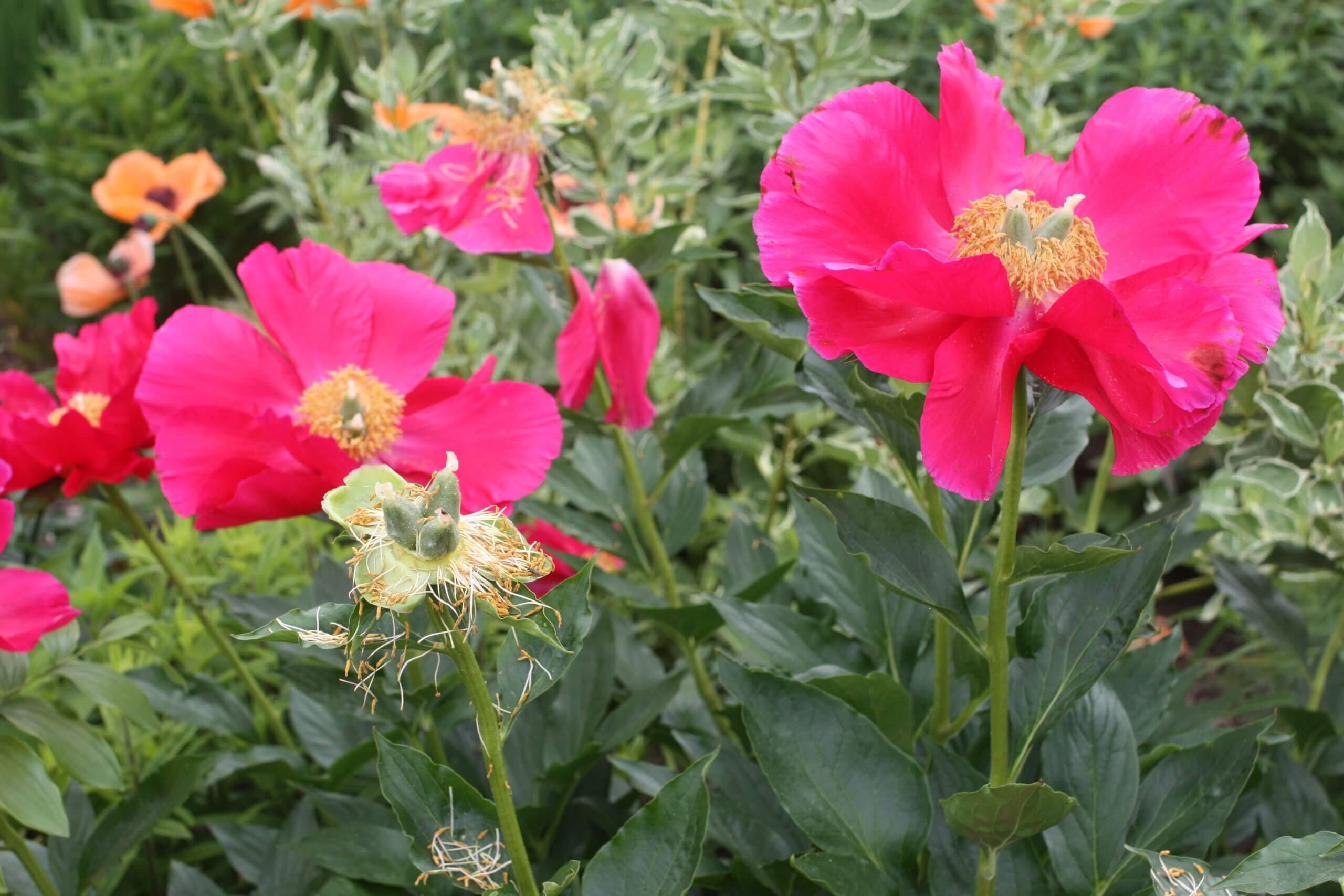
Intersectional (Itoh) peonies are crosses between tree and herbaceous peonies, and they offer the best characteristics of both. Their big flowers tend to be more like those of tree peonies, but they have herbaceous habits. They bloom in late spring and have stronger stems than standard herbaceous peonies, so staking is not needed.
Itoh peonies were first bred in Japan in the 1960s. Since then lots of stellar varieties have come to the market. Choice varieties include the single, magenta-red ‘America’, the semi-double lemonade colored ‘Bartzella’, and the award-winning ‘Garden Treasure’, which has semi-double flowers of palest tangerine.
Growing Peonies
All peonies flower best in full, bright sunlight, though tree peonies can take partial shade. Tree peonies should be protected from strong winds and harsh winter exposure, and double-flowered herbaceous peonies must be staked or caged if you want to keep their flowers off of the ground.
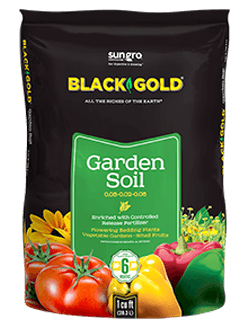 Plant new peonies in early spring or fall. Rich garden soil with a neutral pH is best. Soil that is too acid or too alkaline can cause nutrient deficiencies and result in leaf chlorosis (yellowing between the leaf veins). Before planting new peonies, amend the garden soil with fortifying Black Gold Garden Soil. Established peonies can be mulched in spring with Black Gold Garden Compost Blend. Plant the roots just below the soil surface. If you plant them too deeply, this can inhibit flowering. Small peony starts may take a year or two before reaching full bloom. Feeding peonies in early spring will support flowering and foliage health.
Plant new peonies in early spring or fall. Rich garden soil with a neutral pH is best. Soil that is too acid or too alkaline can cause nutrient deficiencies and result in leaf chlorosis (yellowing between the leaf veins). Before planting new peonies, amend the garden soil with fortifying Black Gold Garden Soil. Established peonies can be mulched in spring with Black Gold Garden Compost Blend. Plant the roots just below the soil surface. If you plant them too deeply, this can inhibit flowering. Small peony starts may take a year or two before reaching full bloom. Feeding peonies in early spring will support flowering and foliage health.
Large herbaceous peony clumps can be divided in fall. Just be sure to dig the large, fleshy roots deeply, and gently cut new divisions from the parent plant. Mulch new plantings lightly and water them well.
Globe-shaped peony buds attract ants, but the insects won’t damage the flowers. They simply feed on the sweet juices surrounding the unopened petals. Before cutting the flowers for indoor arrangements, just be sure to brush off any lingering ants.
When peonies are in full bloom, they look so impressive! And, you can be sure that they will remain in your garden for years to come, offering lots of sweet-smelling blooms for cutting and enjoyment.
